Oxidative Stress, and Innate Immunity: Complexities of Endometriosis

Neovascularization, Oxidative Stress, and Innate Immunity: Unveiling the Complexities of Endometriosis
Endometriosis, a chronic and often painful condition affecting millions of women worldwide, is characterized by the abnormal growth of endometrial tissue outside the uterus. Beyond its physical impact, endometriosis poses various challenges to women’s health, including neovascularization, increased oxidative stress, and immune dysregulation. In this brief article, we delve into the intricate relationship between neovascularization, oxidative stress, and innate immunity in the context of endometriosis.
Neovascularization, the formation of new blood vessels, plays a crucial role in endometriosis. The ectopic endometrial tissue attracts the growth of blood vessels, allowing for the survival and growth of these misplaced cells. However, this excessive neovascularization can fuel the progression of the disease, leading to the development of pain, adhesions, and other complications.
Oxidative stress, a state characterized by an imbalance between reactive oxygen species (ROS) and antioxidant defenses, is another prominent feature of endometriosis. The presence of endometrial implants generates a pro-inflammatory environment, triggering the release of ROS. These highly reactive molecules can cause damage to cellular structures, disrupt normal physiological processes, and contribute to the persistence of the disease.
Moreover, oxidative stress influences the function of immune cells in endometriosis. The innate immune system, which serves as the first-line defense against pathogens, is intricately involved in the pathogenesis of endometriosis. Dysregulation of innate immune responses, partly driven by oxidative stress, can lead to impaired immune surveillance and ineffective clearance of endometrial tissue outside the uterus. This altered immune response contributes to the chronic inflammation observed in endometriosis.
Understanding the interplay between neovascularization, oxidative stress, and innate immunity is essential for exploring new therapeutic avenues for endometriosis treatment. Targeting the neovascularization process could limit the blood supply to ectopic endometrial lesions, preventing their growth and spread. Antioxidant therapies might help restore the balance between ROS and antioxidant defenses, reducing oxidative damage and alleviating symptoms. Additionally, modulating the innate immune response could provide a promising approach to controlling the chronic inflammation associated with endometriosis.
In conclusion, neovascularization, oxidative stress, and innate immunity are interconnected factors in endometriosis. Their intricate relationship influences the progression and impact of the disease. By further unraveling these complexities, researchers and healthcare professionals can pave the way for more effective diagnostic tools and targeted treatments, ultimately improving the quality of life for individuals affected by endometriosis.
(Note: This article provides a brief overview of the subject and does not substitute medical advice. If you suspect you may have endometriosis or require more information, consult with a healthcare professional.)



